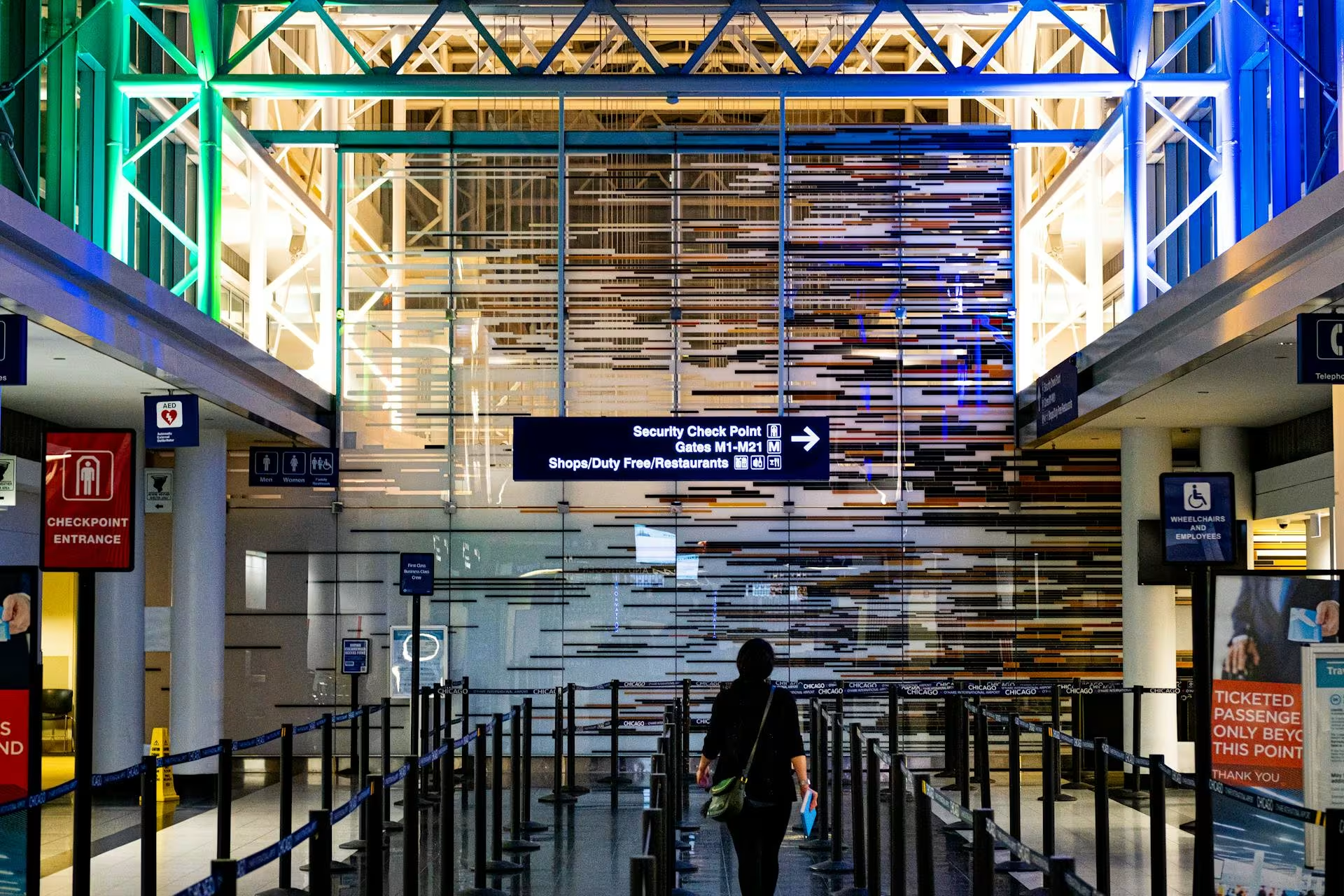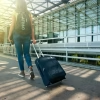Introduction
Whether you’re a frequent flyer or heading off on your first adventure, understanding the rules around carry-on liquids is essential for smooth travel. Airport security checkpoints are designed to keep passengers safe, but if you’re unfamiliar with liquid restrictions, you could face delays, bag searches, or even confiscated items. Surprisingly, many travelers still arrive unprepared, only to be told their favorite perfume, sunscreen, or face serum isn’t allowed on board.
Most airports follow international guidelines, with slight variations depending on the region. The Transportation Security Administration (TSA) in the U.S., the European Union (EASA), and the UK’s Civil Aviation Authority (CAA) all apply similar limits, especially around container size and quantity. However, enforcement may differ slightly based on local airport policies and security technology. That’s why it’s important to know not only the rules but also how to apply them in practice.
In this article, we’ll guide you through the essential regulations on carry-on liquids, starting with the infamous 100ml rule. We’ll also explore exceptions for medical items and baby food, explain which products are banned, and share packing tips to help you breeze through security. If you’re also wondering how to pack more efficiently overall, don’t miss our carry-on packing checklist for minimalist travelers.
The 100ml Rule Explained
The 100ml rule, also known as the 3.4-ounce rule, is the foundation of liquid restrictions in air travel. It means that any liquid, gel, cream, or paste you wish to bring in your carry-on must be in a container that holds no more than 100 milliliters (or 3.4 ounces), regardless of how much product is inside. Even if a bottle is only half full, it will still be rejected at security if the original container exceeds this limit.
All your liquid containers must fit inside a single, transparent, resealable plastic bag with a maximum capacity of one liter. This bag must be presented separately at the security checkpoint, allowing agents to inspect it easily. Reusable bags are accepted in many airports as long as they’re compliant, meaning clear, flat, and sealable.
Common examples of restricted liquids include shampoo, toothpaste, moisturizers, makeup remover, perfume, sunscreen, and hand sanitizer. Gels like aloe vera and pastes like peanut butter also fall under this rule. If you exceed the limit, the item will be confiscated and possibly discarded. In rare cases, travelers are asked to undergo additional screening or are delayed, which can cause stress and make you miss your flight. To avoid this, always double-check your toiletry kit before you pack.
Exceptions to the Rule: What You Can Bring
While the 100ml rule applies to most liquids, there are some important exceptions, especially for health, nutrition, and duty-free purchases. If you need to carry liquid medications, including prescription drugs or over-the-counter solutions, they are allowed in quantities greater than 100ml, but you’ll be required to declare them at security. It’s recommended to bring the original packaging along with a copy of your prescription or a doctor’s note, particularly when traveling internationally.
Baby food and formula are also permitted beyond the 100ml limit if you’re flying with an infant or young child. These may include milk, juice, puree pouches, and sterilized water. You must declare them and may be asked to taste them or open the containers during inspection.
Duty-free liquids are another exception. If purchased after passing security, in sealed, tamper-proof bags with the receipt inside, these are typically allowed, even if they exceed the standard limit. However, if you have a connecting flight in another country, check the liquid rules there too, or your duty-free bottle might be confiscated during transit.
Some aerosols and sprays (like deodorants or shaving foam) are permitted if under 100ml and properly labeled. But pressurized containers should be packed carefully to avoid leakage or damage. Finally, a smart strategy many solo travelers use is switching to solid alternatives: shampoo bars, lotion sticks, and toothpaste tablets are not subject to liquid restrictions and are easier to carry long-term.
What You Cannot Bring in Your Carry-On
Despite these exceptions, there are several liquid items that are strictly prohibited in carry-on luggage. These include unsealed bottles of water, cleaning agents, paints, solvents, and anything that could be considered a potential hazard. While it may seem harmless, bringing an oversized container of lotion or a cleaning spray could lead to unnecessary delays.
Open beverages or liquids in unmarked containers are also typically disallowed. For example, a smoothie bought outside the airport or a jar of homemade sauce will likely be tossed at the checkpoint. Always consume or discard such items before going through security.
Products that are flammable, corrosive, or chemically reactive are not allowed under any circumstance. These include lighter fluid, certain nail polish removers (with acetone), bleach, and industrial solvents. Even some strong perfumes with alcohol content can raise red flags. When in doubt, check the airport’s or airline’s restricted items list, or consider packing them in your checked luggage if permitted.
Keep in mind, carry-on bans aren’t limited to liquids alone. Items that combine multiple risks, such as compressed gas canisters with flammable content, may be confiscated on the spot. If you’re unsure, it’s always better to leave it out.
Smart Packing Tips for Carry-On Liquids
To avoid last-minute surprises at security, smart packing is essential. First, invest in a high-quality, transparent, TSA-approved toiletry bag. Many are available online and are designed specifically to meet airport standards. Next, use reusable travel-size bottles (under 100ml) to decant your favorite products, this not only saves space but ensures compliance with the liquid rule.
Group all liquids in one place and pack them at the top of your carry-on, so you can easily remove them at checkpoints. Avoid stuffing your bag last-minute or mixing toiletries with electronics, which can lead to longer inspections.
Consider switching to solid alternatives where possible: shampoo bars, deodorant sticks, bar soap, and toothpaste tablets are leak-proof and last longer. Not only do they simplify security checks, but they also reduce plastic waste and are often airline cabin pressure-friendly.
For added peace of mind, use packing apps like PackPoint or Travel List to double-check your list before departure. And if you’re flying long-haul or have layovers, be sure to bring a small supply of essentials (like hand sanitizer and moisturizer) in case your checked bag is delayed or inaccessible. If you’re not sure what to prioritize, our pre-flight airport security guide can help.
Country-Specific Differences
While the 100ml rule is fairly universal, regional variations do exist and are worth noting. In the United States, the TSA follows strict 3-1-1 rules (3.4 oz bottles, 1 quart-size bag, 1 bag per traveler), and screening is usually thorough. In the European Union, the same principles apply, though enforcement can feel more relaxed depending on the airport. The UK, post-Brexit, maintains similar standards but is gradually introducing CT scanners, which may eliminate the 100ml rule in select airports.
Other countries, such as Japan and Australia, strictly enforce carry-on liquid rules, and you may face delays for even minor infractions. In the Middle East, security varies widely depending on the airport. For example, Dubai is known for being efficient but strict, while smaller airports may have additional screening layers.
Some major international airports have started using 3D CT scanning technology that allows passengers to keep liquids and laptops inside their bags, signaling a possible future end to the 100ml rule. However, this is not yet the global norm. Always check the specific regulations for your departure and transit airports before flying.
Conclusion
Understanding what you can and can’t bring in your carry-on liquids is one of the easiest ways to reduce stress at the airport. The 100ml rule may seem strict, but it exists for safety, and once you learn how to work around it with smart packing and solid alternatives, it becomes second nature.
Always declare exceptions like medication or baby food, avoid prohibited substances, and take time to prepare your toiletry bag in advance. Whether you’re flying to Iceland for a wellness retreat or catching a budget flight across Europe, staying informed means traveling smoother.
Frequently Asked Questions
The 100ml rule means that any liquid you bring in your carry-on must be in a container no larger than 100 milliliters (3.4 ounces). All containers must fit inside a single, transparent, resealable plastic bag of no more than 1 liter in total capacity. This rule applies at most airports worldwide, including those in the USA, EU, and UK. Even partially full containers over 100ml will be confiscated at security.
Yes, you can bring multiple 100ml containers in your carry-on, as long as they all fit within the allowed 1-liter clear plastic bag. Typically, this means around 6–10 small bottles depending on their shape and size. The bag must be completely sealed, so don’t overpack it. Each traveler is allowed only one bag of liquids.
Yes, solid toiletries like shampoo bars, lotion bars, deodorant sticks, and toothpaste tablets are allowed in unlimited quantities in your carry-on. They are not considered liquids and are a great way to save space and avoid liquid restrictions. Many travelers use solid alternatives to simplify airport screening and reduce plastic waste.
No, you cannot bring bottled water or drinks through airport security unless they were purchased in the airside area (after the security checkpoint). Any liquid in an open or unsealed container will be confiscated. If you want to stay hydrated, bring an empty reusable water bottle and fill it after passing through security.
It depends. Liquids purchased at duty-free shops are generally allowed if they are sealed in tamper-proof bags and accompanied by a receipt. However, on connecting flights — especially when changing countries — you may be subject to new security checks. Always confirm with the airline or check local regulations before boarding your next flight.
Generally, yes — both TSA and European airports follow the 100ml rule for carry-on liquids. However, implementation may vary slightly. Some European airports are testing advanced 3D scanners that may eliminate the need to remove liquids or follow size limits, but these changes are not yet widespread. Always follow the stricter rule to avoid surprises.
If you bring a liquid container over 100ml, even if it’s partially full, it will likely be confiscated at the security checkpoint. You may also experience additional screening or delays. To avoid losing expensive items or missing your flight, always check the size of your containers before packing.

